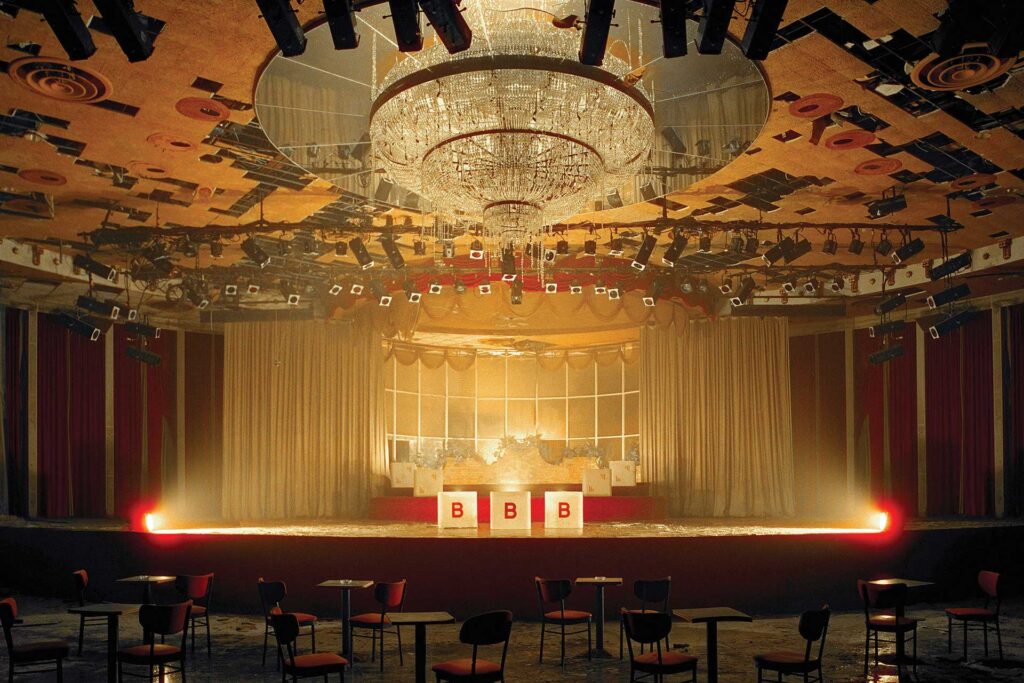Rhinebeck native Isaac Jeffreys captures the light and the magic of this bygone golden era.
By Tara Solomon
Photography by Isaac Jeffreys
I don’t know about you, but my early 20s were spent watching MTV and shopping at the mall, among other low-brow pursuits.
Unlike Isaac Jeffreys, an enthusiastic 23-year-old Rhinebeck native with a BFA from Parsons School of Design who’s built an impressive portfolio photographing abandoned hotels in New York’s famed Borscht Belt—a hobby since high school, a time when I was laser-focused on scrapbooks and braiding my hair.
Jeffreys, an old soul who enjoyed listening to his grandparents’ stories about their summers in the Catskills, spent “a good amount of time dreaming of the past.” Fascinated by the mystique and glamour of the bygone era, the atypical zillennial has documented 75 historic Borscht Belt resorts throughout Sullivan and Ulster counties where Jewish families famously vacationed en masse from the 1920s through the 1970s.
The faded facades, drained swimming pools and empty theaters of former iconic hotspots including Grossinger’s—the inspiration for the 1987 film Dirty Dancing—and Kutsher’s Country Club, whose ritzy Stardust Room hosted the biggest names in the biz, from Duke Ellington to Joan Rivers, come alive in haunting detail.
“Images of the hotels in their heyday look like something out of a dream sequence,” says the young photographer, whose modern interpretations indeed serve Twilight Zone (un)realness. Dramatically staged and lit at night by Jeffreys and shot with a Hasselblad medium-format film camera, the austere images are eerily inviting, making us wistful for those Marvelous Mrs. Maisel days of yore, having the time of our lives while frolicking through the “Jewish Alps” in fabulous vintage getups. (Side note: Superfans of the sublime Amazon series will recall Season 2, Episode 4 “We’re Going To The Catskills!” in which Midge Maisel and her mother Rose assemble their late-1950s vacation looks from racks and racks of clothing they’ve moved into the living room—which truly is an inspired concept.)
In reviving the allure of fabled Borscht Belt destinations such as the 1901 Nevele Grande Hotel in Ellenville—with its ski slope, Swiss chalet and exotic “mural staircase”—Jeffreys gives a new generation (his generation) an opportunity to appreciate the architectural merit of hundreds of midcentury modern resorts which were “cultural epicenters in the Catskills, representing a peak in design and art.”
Of the approximately 500 hotels during the Borscht Belt’s glory days, only half remain, says Jeffreys, who plans to complete his Borscht Belt series—now hovering somewhere near 200 images—this summer.
On August 13, Jeffreys will be part of a joint show entitled “Day And Night: Return To The Borscht Belt” with photographer Marisa Scheinfeld at Grocery Store Gallery in Mountain Dale in Sullivan County. Considered one of the Borscht Belt’s oldest towns (established 1880), the hamlet will be honored with a special designation by the Historic Marker Project, for which Jeffreys serves as visual coordinator.
A gallery opening in New York City’s new art mecca, West Chelsea—and a book deal—are at the top of the Borscht Belt ambassador’s wish list. “There’s such a rich visual history in the Borscht Belt,” Jeffreys says. “My goal is to make that history come alive.” Again, much loftier goals than I had at his age. The Borscht Belt deserves nothing less.

Comments are closed.